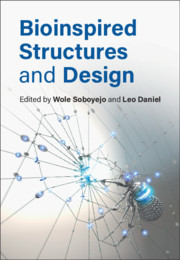Book contents
- Bioinspired Structures and Design
- Bioinspired Structures and Design
- Copyright page
- Contents
- Contributors
- Preface
- Part I Materials
- 1 Bioinspired and Biomimetic Design of Multilayered and Multiscale Structures
- 2 Human Cortical Bone as a Structural Material
- 3 Bioinspired Design of Multilayered Composites
- 4 Bamboo-Inspired Materials and Structures
- Part II Structures
- Part III Natural Phenomena
- Index
- References
3 - Bioinspired Design of Multilayered Composites
Lessons from Nacre
from Part I - Materials
Published online by Cambridge University Press: 28 August 2020
- Bioinspired Structures and Design
- Bioinspired Structures and Design
- Copyright page
- Contents
- Contributors
- Preface
- Part I Materials
- 1 Bioinspired and Biomimetic Design of Multilayered and Multiscale Structures
- 2 Human Cortical Bone as a Structural Material
- 3 Bioinspired Design of Multilayered Composites
- 4 Bamboo-Inspired Materials and Structures
- Part II Structures
- Part III Natural Phenomena
- Index
- References
Summary
In the past, significant research has been focused on improving the mechanical properties of lightweight structural materials due to the large demand in bioengineering, aerospace, automotive, armor, and construction applications. This primarily includes advanced structural materials, which are lightweight materials with outstanding mechanical properties such as strength and toughness. Meanwhile, various materials exist in nature that inherently have these exceptional mechanical properties [1]. There is, therefore, a great interest in understanding and analyzing the structure and mechanical behavior of these materials [2]–[7]. Evolution has brought about beautiful, optimized solutions to many problems. Nacre [8], mantis shrimp club [9], bone [10], deep sea sponge [11], bamboo [12,13], and elk antler [14] are just a few of these structural biological materials.
- Type
- Chapter
- Information
- Bioinspired Structures and Design , pp. 45 - 88Publisher: Cambridge University PressPrint publication year: 2020



